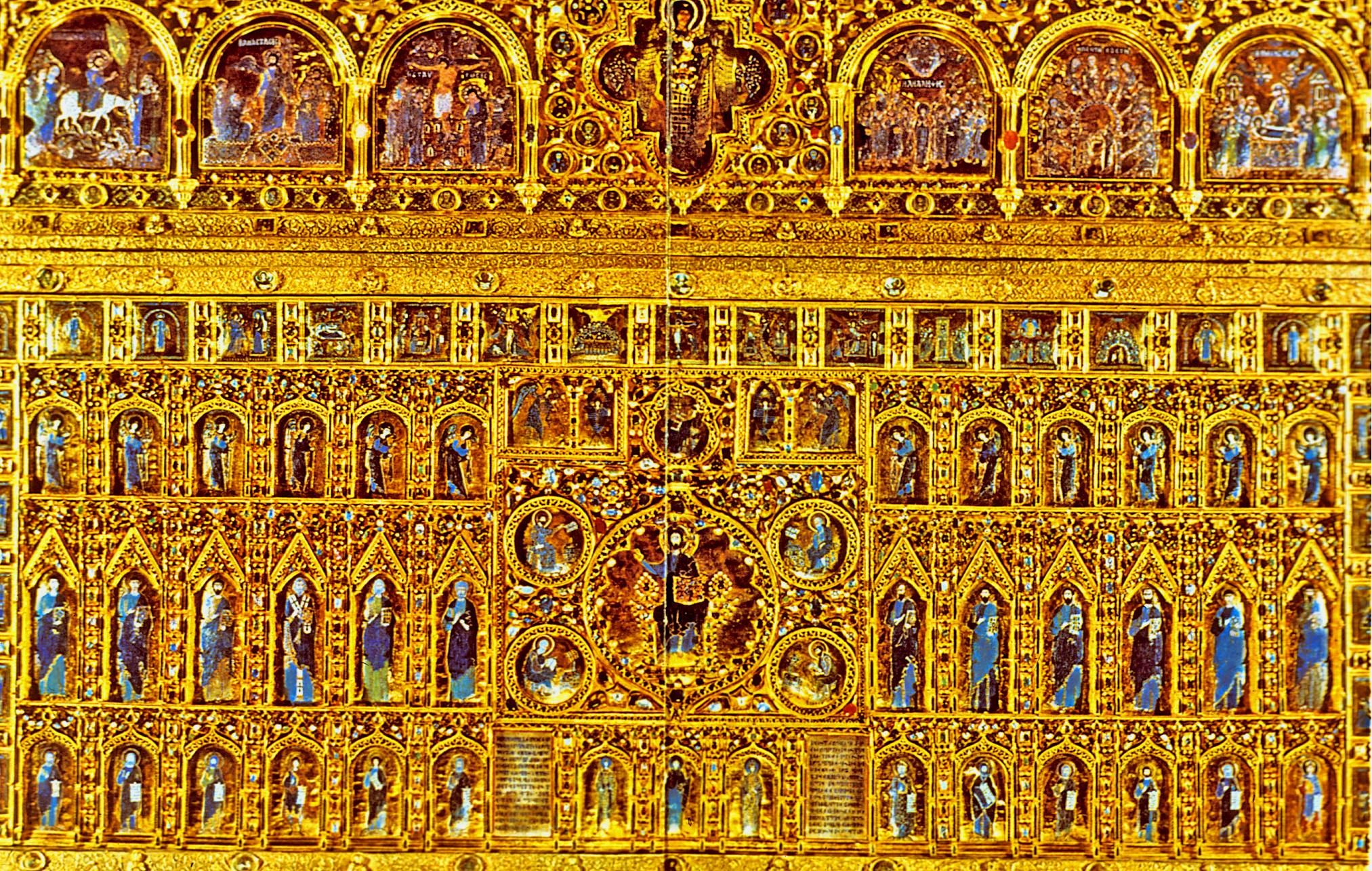As churches were being torned down, effigies of the winged lion destroyed and whole canals interred and paved over, Venetians could do little to stop the humiliation but look on as Napoleon inflicted lasting damage to their city. He had warned them, he was going to be “Attila the Hun for the city of Venice”, and he certainly kept his word. Aside from destroying what he didn’t fancy, he instructed his men to pillage the best and most precious pieces of art in the city.
One morning, one of his French officials entered the Basilica with a local translator, and he demanded that the church deacon be present to show him all of the church’s treasures, from which he would pick and choose the best. Once they arrived here in front of the Pala d’Oro, the French official, impressed, asked the deacon if what he was seeing was all real gold and precious stones. The deacon replied in Venetian “xe tuto vero”, which in dialect could mean both “it’s all real” or equally “it’s all glass”.
The Venetian translator chose to give the second one, and the Frenchman decided to move on as it seemed not to be so valuable after all.
Another instance where lack of culture salvaged the Pala d’Oro occurred during the Second World War. Venice’s Arts Superintendent at the time decided the general climate in Europe was far too tense, and feared for the safety of the city’s artwork; to avoid any risks he decided to send the Pala d’Oro, along with other precious objects, to a smaller city outside of Venice until the war was over. The van carrying the works was stopped at a checkpoint by Nazi officials, who insisted on inspecting the contents of the containers. They opened the first, which contained music score sheets of operas by Gioachino Rossini, and mistaking them for worthless amateur pieces, they didn’t bother inspecting any further and allowed the van to continue. Lucky, since the Pala d’Oro was stored
in the container next in line.
The Pala d’Oro is most precious treasure inside the Basilica, it is impressive to think that it
was built shortly before the year 1000, although it was originally quite smaller, and was repeatedly enlarged and enriched over the centuries, in parallel to the Basilica itself.






